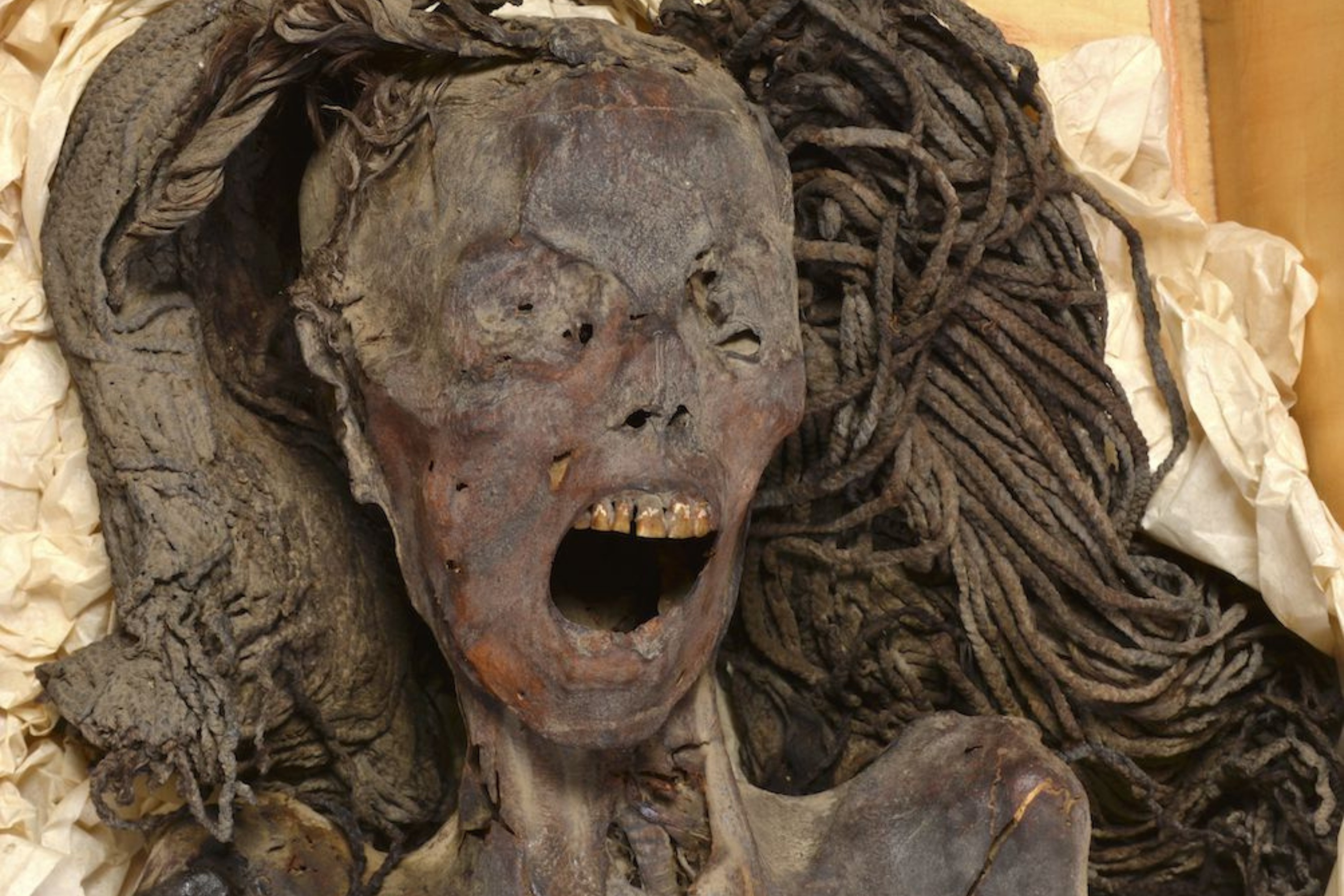In 1935, beneath the ancient sands of Thebes, archaeologists stumbled upon a haunting find: the mummified remains of a woman, forever frozen in a scream of terror. Known as the “Screaming Woman,” her mouth remains agape, presenting a perplexing puzzle for researchers.
Traditionally, scholars believed this horrifying expression stemmed from poor mummification, possibly due to the embalmers’ negligence in closing her mouth. Recently, however, a team from Cairo University has unearthed evidence that suggests something far more sinister: she may have actually died in agony.

Sahar Saleem
According to Prof. Sahar Saleem, an author of the study, the Screaming Woman was embalmed using high-quality materials, dispelling the notion of careless mummification. “Her well-preserved state contradicts the previous belief that her internal organs were left in place due to sloppy work,” she explained.
Using CT scans, Saleem and her colleague Samia El-Merghani meticulously examined the mummy, revealing insights into her preservation and embalming materials through advanced techniques like scanning electron microscopy and x-ray diffraction analysis.
Unveiling the Past: The Screaming Woman
The Screaming Woman, cataloged as “CIT8,” was discovered in the tomb complex of Deir el-Bahari during a 1935 expedition led by the Metropolitan Museum of New York. Her burial holds connections to Senenmut, a high steward of Pharaoh Hatshepsut, indicating a significant historical context.
Hailing from the 18th Dynasty, she was laid to rest in a wooden coffin, adorned with jewelry, including black wig fibers and scarab rings. Post-excavation, her remains were eventually transferred to the Cairo Egyptian Museum, while her coffin and rings remain on display in New York.

Sahar Saleem
Surprisingly, the scans also revealed that her internal organs—including the brain and liver—remained intact, which was unusual for her time. Typically, only the heart was left in place during mummification. Estimates suggest that she stood about five feet tall and was roughly 48 years old at her death.
While the exact cause of death remains unclear, her skeletal analysis showed signs of arthritis and missing teeth. Researchers believe basic dental care practices were likely in place in ancient Egypt.

Sahar Saleem
The Screaming Woman’s wig was crafted from date palm fibers and treated with minerals for added texture and color, while her embalming used aromatic resins like frankincense and juniper—luxuries transported from afar.
Sahar Saleem notes that such resources reveal the trade connections of ancient Egypt. “Frankincense was brought from the fabled land of Punt,” she highlighted.
But what caused her horrific expression? Saleem proposes that her facial contortion might indicate a cadaveric spasm—a rare phenomenon where muscles stiffen post-death due to extreme stress. Unlike rigor mortis, these spasms are instantaneous, possibly explaining why her mouth remained open.
“The Screaming Woman serves as a unique ‘time capsule’ capturing the circumstances of her death and mummification,” Saleem concluded.
For those interested in the deeper findings of this study, details are available in the journal Frontiers in Medicine.
